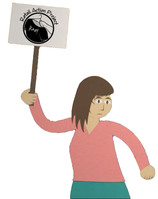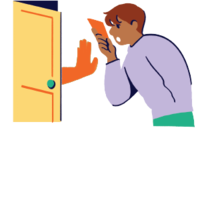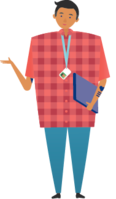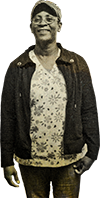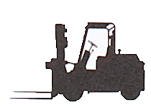Making Policy Public
‘You know a lot less about New York than you think. These graphics prove it’
Fast Company
April, 14, 2021
A new book breaks down one of the most built-up cities in the world.
‘A Guide to Your Rights in Homeless Shelters’
City Limits
February, 19, 2020
The Safety Net Project of the Urban Justice Center, the Safety Net Activists, the Center for Urban Pedagogy and design studio 13 milliseconds this week released a pamphlet outlining the rights that homeless individuals and families have in New York City. It covers everything from privacy to diet, voting to disabilities, public benefits to income savings; explains supportive housing and vouchers; talks about how to get a fair hearing and how to seek permanent affordable housing.
‘How Graphic Design Can Help Advance Social Equity In Cities’
Next City
November, 19, 2019
This approach has been championed by organizations such as the Center for Urban Pedagogy (CUP), who produce visual explanations demystifying urban policy issues — from food access to street vending — so that more individuals can better participate in shaping their communities.
‘101 small ways you can improve your city’
Curbed
November, 2, 2018
Fix up your local park. Does barely functional equipment take the fun out of your local playground? Would new basketball courts or equipment make the park next door more enticing? To help guide those seeking to get their public parks in tip-top shape, the Center for Urban Pedagogy created a guide for building coalitions, activating the community, and petitioning local government for change. It’s New York-centric, but the lessons can be applied everywhere.
‘Janice Bartley Speaks at the Center for Urban Pedagogy’
AHRC NYC
October, 19, 2018
Janet Bartley, Advocacy Specialist for AHRC NYC, spoke about her experience working with CUP to produce the Making Policy Public project, What Does It Mean To Live In My Own Place?
‘QUEENS RESIDENTS TURN THE HEAT UP ON UTILITIES’
NY1 News
March, 9, 2018
The Public Utility Law Project and State Senator Leroy Comrie’s office hosted a free clinic on Friday, helping residents go through their utility bills.
‘Worker Co-Ops Explained in the Center for Urban Pedagogy’s Latest Project’
Impact Design Hub
May, 3, 2016
CUP created the bilingual fold-out to explain the logistics of worker co-ops, comparing co-ops to typical businesses, outlining how one can start or join a worker co-op, and illustrating the daily employment life of a worker-owner.
‘Graphic Design to Help Figure Out Health Insurance’
Impact Design Hub
November, 6, 2015
To help the thousands of people in New York who still don’t have health insurance, the Center for Urban Pedagogy (CUP) worked with Community Health Advocates (CHA, a program of the Community Service Society), designers Other Means, and illustrator Tim Lahan to create Figuring Out Health Insurance, a poster that walks individuals through the process of obtaining health insurance.
‘Five Ways to Help Nail Salon Workers’
Jacobin Magazine
May, 18, 2015
Adhikaar, based in Woodside, Queens, organizes in Nepali communities and has been running a campaign on the health and safety problems faced by nail salon workers. They have produced a pamphlet in collaboration with the Center for Urban Pedagogy with advice for both workers and customers at nail salons — including tips like “Be patient!” in English, Spanish, Korean, Chinese, and Nepali.
‘Your Ethics or Your Manicure’
WNYC
May, 11, 2015
Brian Lehrer mentions CUP’s Healthy Salons For All poster during his interview with Sarah Maslin Nir!
‘How Can You Get an Ethical Manicure? Support Worker Organizing’
The Nation
May, 11, 2015
On the workers’ side, the Nepali community organization Adhikaar just published a colorful pamphlet—designed in collaboration with the Center for Urban Pedagogy—to educate communities about both public-health and labor-rights issues in the sector. The cartoon graphics, designed for accessibility, present general advice on workplace hygiene, health and safety, guidance on labor laws for workers, and advice for customers (“Be generous—tip at least 20%”).
‘Governor Cuomo Orders Inspections of New York Nail Salons’
The Village Voice
May, 11, 2015
Partnering with the Center for Urban Pedagogy, Adhikaar has created a poster for salon owners to display in their places of business. With text in English, Chinese, Nepali, Spanish, and Korean, the poster includes health and safety information for both workers and patrons.

